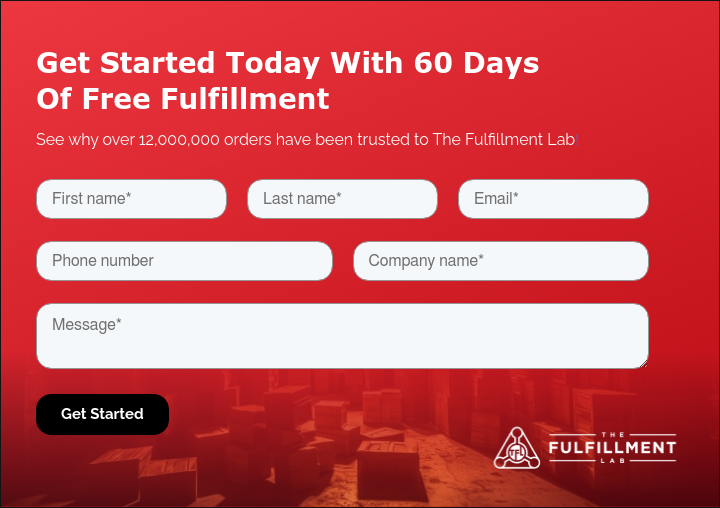How To Source Products For Ecommerce Startups
Let’s say you’ve got a great idea for a new eCommerce business. Or, you’ve identified a new product that could really complement your current offerings. One of the first things you’ll need to decide is how to go about obtaining the products you need to bring your idea to market. In this blog, we’ll look at different types of product sourcing, top product sourcing strategies, and how to source products.
At A Glance: Product Sourcing Checklist
- Always be sourcing for future opportunities.
- Do your homework on product & market demand.
- Follow proven sourcing models of others.
- Take the lead with unique or niche products.
- Get offline: attend trade shows, visit suppliers.
- Look local to improve margins & control.
- Cut out unnecessary middle-men in your chain.
- Reconsider bulk purchases to avoid over-stocking.
- Know your supplier like a partner.
- Have a plan B: backup supplier ready.
What Is Product Sourcing?
Product sourcing is all about finding trustworthy vendors in the market that you can buy quality products from. You may need parts for the manufacturing of your product, or you may simply be looking to resell. The ultimate goal, of course, is to get the best quality product at the lowest possible price. That profit margin is what will help fuel the growth of your businesses.
Of course, product sourcing isn’t always as easy as it sounds. It requires that you choose a product sourcing strategy, and then do some homework to ensure you find a reliable vendor (and probably a couple backups, too, but more on that later). So, let’s dive in!
3 Types Of Product Sourcing
So, how to source a product as an eCommerce startup? There are basically three options to consider: DIY products or services, working with a manufacturer or wholesaler, or partnering with a fulfillment center. Here are some of the considerations for each.
1. DIY Products Or Services
While the sale of homemade goods – from woodworking crafts to knitted blankets, handmade jewelry to hand-drawn paintings – used to be relegated to flea markets and the like, thanks to the internet you can now sell your wares online. However, you’ll still need supplies. You might get these from craft stores, major retailers, estate sales, and so on. Then, you’ll need to determine how you’ll ship orders. As a startup, this will probably mean trips to the USPS, FedEx, or UPS store. However, as your company begins to scale, you may need to consider a shipping service to save you time and money so that you can put your energy into making more products and marketing the business.
2. Working With A Manufacturer Or Wholesaler
As your business scales and you realize you don’t have the time or manpower to make all your own products, you may decide it’s time to bring on board a manufacturer or wholesaler to develop your product, or at least supplement DIY efforts during busy times of the year. To go this route, you’ll need to find the products; a reputable manufacturer or wholesaler can probably present you with some options. Of course, you’ll want to vet potential partners to be sure you’re getting someone that is trustworthy, reliable, and cost-effective. Other considerations include their customer service support, timelines, and any minimum quantity stipulations.
3. Hiring A Fulfillment Center
A fulfillment center, sometimes called a third-party logistics (3PL) company or dropshipper, lets you purchase from a vendor and list their products on your online store. You basically unload inventory, packaging, and order fulfillment! As with any manufacturer or wholesaler, you still want to vet potential fulfillment partners to be sure you’re working with someone fair and reputable. For more on why you should consider a fulfillment center, check out 10 Reasons to Use a Fulfillment Center.
10 Product Sourcing Strategies
When it comes to sourcing products, there are a number of factors to consider. We’ll take you through our top ten product sourcing strategies that can help get your business booming.
1. Always Be Sourcing
While sales may be great and you may think you have found the ideal product source, it’s important to always be sourcing and always be looking for “the next big thing.” Becoming complacent can be the downfall of any business (just think about Blockbuster, for example, which refused to believe people would have their media mailed to them). By continuing to look at new products and market trends, you can remain relevant to consumers and maintain profitability.
2. Do Your Homework
You may think you have a great product idea, but the market may not be as enamored with it. So, you’ll need to conduct some market research to determine what interests your customers (this can easily be done with consumer surveys). Also, it’s important not to just begin selling a product because of the high profit margins; those margins won’t matter if no one is buying. On the other hand, if there’s a popular product but you’re unable to source it without an extremely low profit margin, it may not be worth the time and energy. Lastly, you want to be sure products fit within your product portfolio. Oddball products that are unrelated to your flagship products are likely to confuse your buyers.
3. Follow The Leader
When it comes to product sourcing, there’s no shame in following other successful sellers’ business models to be successful yourself. So, go ahead and order a product from one of your competitors. You will likely be able to find out who sourced the product by checking the packaging. If you like what you see (packaging, insulation, delivery time, etc), perhaps that company would be an ideal supplier for you as well?
4. Take The Lead
On the other hand, perhaps the market for a particular product is too crowded, and jumping on the bandwagon may not be in your best interest (after all, you don’t want to get saddled with a lot of unsellable inventory). In some cases, it may be best to branch out on your own and set your own product trends after conducting some research and speaking with suppliers.
5. Get Offline
Why would an eCommerce retailer get offline? To do some real-world research! You may be able to find a great product source by visiting trade shows. At these events, you can also meet product manufacturers and developers first-hand, establishing a real one-on-one relationship that could last for years.

6. Look Local
To increase profit margins, a lot of eCommerce sellers will look overseas, often to China, for manufacturing help. However, sometimes it may be in your best interest to keep product sourcing and manufacturing a bit closer to home. Not only will you have the peace of mind that the product is regulated by the US government, you can also avoid language barriers and other challenges. Plus, depending on the target audience, a “Made in the USA” label can be a real selling point and a product differentiator.
7. Cut Out Middle Men
The more businesses involved in your supply chain, the higher the price you’ll pay for product. So, when possible, go directly to the source for your products (or as close as possible). This will keep costs down and profit margins up.
8. Reconsider Bulk Buying
Buying in bulk will almost always get you a better price, but if the product is not a fast seller, you could be tied down with inventory for a long time. And, if a newer model comes out, your inventory could become essentially worthless. That loss can really hurt your bottom line. A good warehouse management system (WMS) can help you determine when to buy and when to hold back so that your operation can run leaner.
9. Know Your Supplier
A supplier should be a partner; after all, you’re in this together to both earn a profit. So, you’ll want to nurture your supplier relationship so that you’re first on their call list when they have a hot new product and you’re first in line when you’ve encountered a product default and need it corrected.
In addition, a good supplier will provide you with all the information you need to develop detailed product descriptions, videos, FAQs, and buying guides (this is especially important if you’re selling a complex product). All of this information is extremely valuable to buyers, and could mean the difference between making a sale or running a customer into the arms of a competitor.
10. Have A Plan B
Having a backup supplier is simply a smart move, and it doesn’t always mean it’s because you don’t trust your primary supplier. What if there’s a disaster that impacts your primary supplier, such as a data breach, a major storm, or a product recall? This can completely upend your supply chain through no fault of your own. Another scenario: there’s a change in ownership or management, and suddenly your supplier is asking for a whole lot more money. With a contingency plan (and a backup supplier), your operation can continue without missing a beat.
Finding A Trusted Product Sourcing Company
We mentioned it before but it doesn’t hurt to reiterate how important it is to find a partner you can trust. There are fraudsters out there looking to take advantage of startup eCommerce companies; they may claim to be a manufacturer or wholesaler, when in fact they’re much further down the supply chain (and sometimes at the bottom).
They’ll buy from another source, and then sell you products at inflated, end-user prices. This cuts into your profits, and only serves to boost their bottom line. So, once again, be sure to do your homework so that you don’t wind up partnering with a shady, fly-by-night supplier; read online reviews, ask for client references, check the BBB, and so on.
If you’ve decided that a fulfillment center is in your best interest, you can’t do any better than The Fulfillment Lab. Our cutting-edge Global Fulfillment Software (GFS)™ is changing the way that fulfillment is handled and meeting the needs of modern online businesses through:
Reliable Shipping
Global order fulfillment capabilities and expedited shipping from 14 strategically located warehouses to guarantee delivery in 3 days or less.
Complete Transparency
Visibility into every stage of the order fulfillment process in real-time.
Customized Packaging
Design customized boxes, labels, coupons, and inserts so you can deliver a customized, engaging user experience.
Dynamic Integration
Software pairs with every major eCommerce system including Magento, Shopify, Limelight, SquareSpace, and more.
Unmatched Flexibility
Make last minute edits, changes, add customer service delays, and more to tailor the entire fulfillment experience to your customers.
But this is a blog about product sourcing, right? Well, The Fulfillment Lab also provides On-Demand Products as an additional service. This enables you to offer a new product or product line with little upfront cost! Read more about our On-Demand Products here, or contact us today!
FAQs
What Is The Role Of Product Sourcing In E-commerce?
Product sourcing ensures your e-commerce business has the right products at the right time and price. It impacts availability, cost, and customer satisfaction by securing reliable suppliers and managing stock quality.
How Do I Find E-Commerce Suppliers?
You can locate e-commerce suppliers via online directories, trade shows, or wholesale marketplaces (e.g., Alibaba, AliExpress). Once found, vet their credibility, request samples, compare pricing, and build relationships before committing.
What Is The Most Profitable Item To Sell Online?
High-profit items often include beauty & skincare, tech accessories, and niche apparel—because they offer strong margins and repeat demand. Meanwhile, small-size, low-shipping-cost items with trend appeal boost profitability in online retail.



